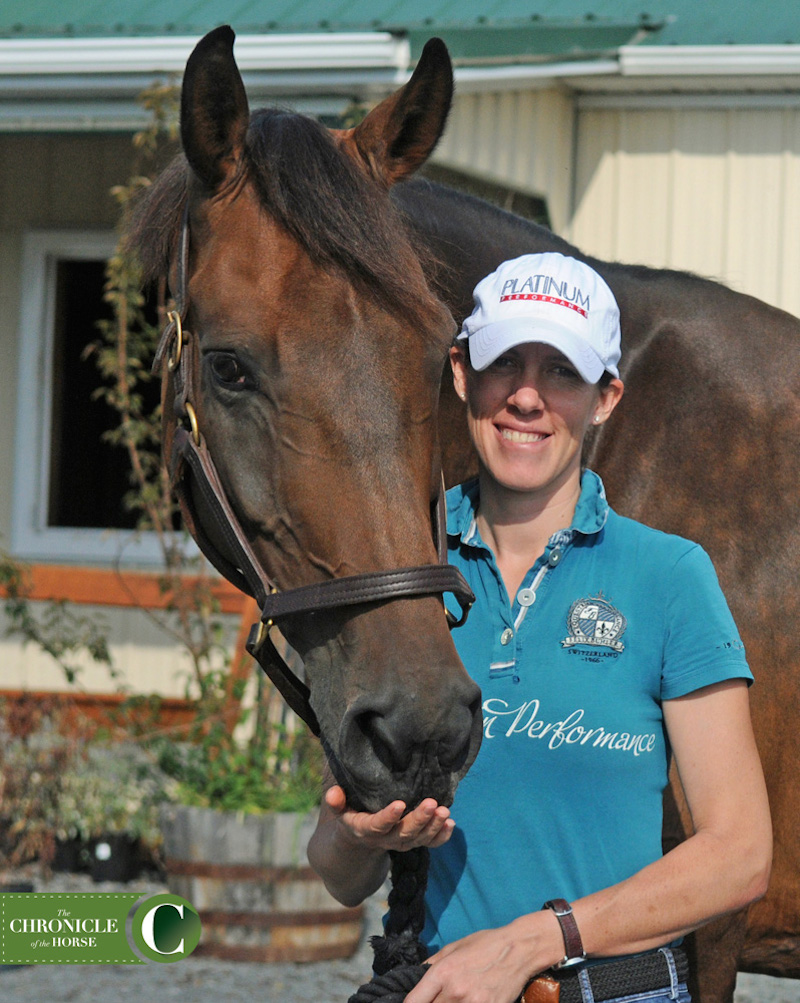He catches your attention and won’t let you look away. He has an intelligent eye, a dappled coat, and a tail that would make anyone drool in envy. Lonoir looks like he belongs on the cover of a magazine.
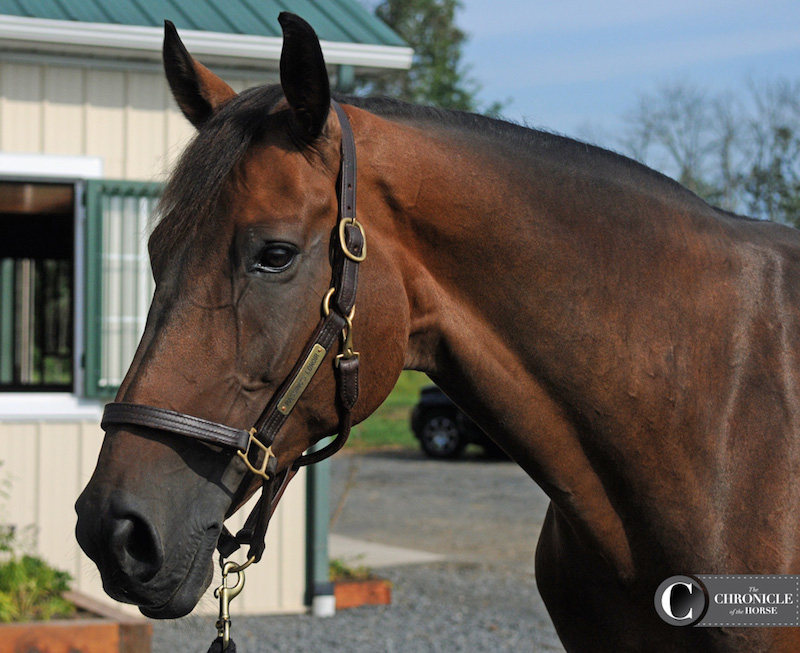
The handsome Lonoir. All photos by Kimberly Loushin
But he’s more than a pretty face. The Danish Warmblood (De Noir—Lorani, Loran) is making a name for himself in the sandbox with owner and rider Olivia LaGoy-Weltz.
While Lonoir was still competing on the small tour he was named as traveling reserve for the 2015 Pan American Games (Toronto), and this year he won the Grand Prix and the Grand Prix Special for the United States during the Nations Cup in Wellington, Fla. This summer he helped the U.S. Nations Cup team win Rotterdam (the Netherlands) and take silver at Aachen (Germany).
LaGoy-Weltz found “Lono” at Andreas Helgstrand’s barn while looking for another up-and-coming mount.
“He was tall and handsome and definitely the nicest thing that we’d seen in my price range,” said LaGoy-Weltz. “He definitely had a lot of presence. He’s kind of an elegant horse, and he was quite athletic and sensitive. He had a big, pretty canter and a nice trot—and good reactions. When you touched him with the whip he really sort of grabbed his butt and quickened his hind leg.
“Helgstrand said, ‘He’s a super horse. He has a lot of power,’ ” said LaGoy-Weltz. “I was like, ‘Oh, Andreas is telling me this horse has a lot of power; this must be a very athletic horse.’ ”
We went to LaGoy-Weltz’s Mountain Crest Farm in Haymarket, Va., to get to know the 13-year-old gelding.
• Lono had a successful career as a young horse before his breeders Jan and Dorte Rassing sent him to Helgstrand’s barn to get sold.
“He’s such a sensitive horse that I think that the atmosphere was a little bit overwhelming for him,” said LaGoy-Weltz. “He also really has to warm up in his own way. At sales barns you typically have to get on and be able to be like, ‘Isn’t this horse amazing?’ in the first five steps, and it’s hard, so he hadn’t sold, and I think maybe was a little bit struggling in the atmosphere.”
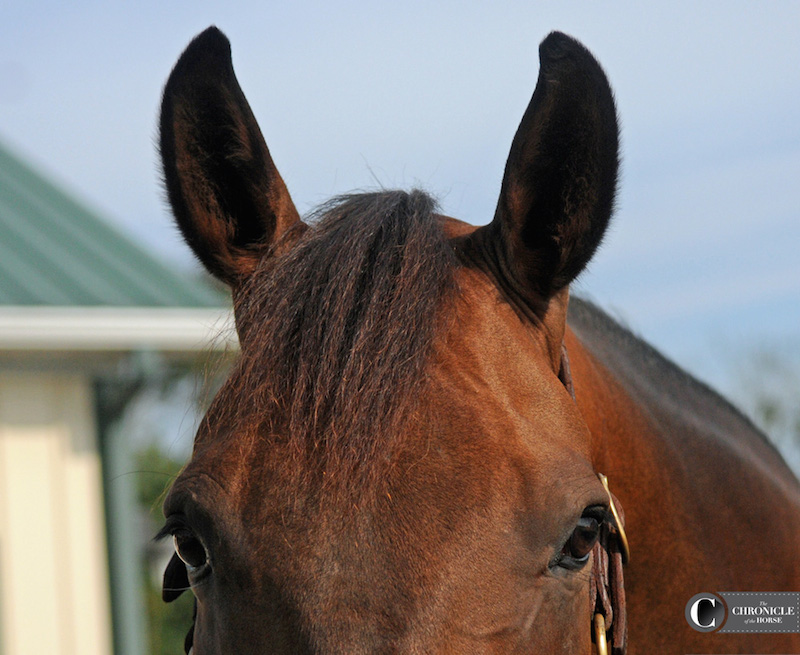
• A couple of years later LaGoy-Weltz met the Rassings, and they revealed that Jan had been at the barn when LaGoy-Weltz first sat on Lono.
ADVERTISEMENT
“When I met him, he said that he’d gone home and told his wife that he thought that the rider for Lonoir had come today,” said LaGoy-Weltz. “I guess there was a corner he was always usually freaking out in; he was good.
“It was very cute,” she said. “I kind of always knew that he was sensitive and a little bit of a tricky ride in the beginning, but it was kind of fun to hear.”

• At 17.2, Lono is a towering presence in the barn, but he’s not one you have to muscle around. LaGoy-Weltz described him as a lady’s ride.
“That part I liked about him because if I need to I can be a strong rider, but I prefer not to have to be in that way,” she said. “With a horse that big, if they don’t have enough go or enough sensitivity, by the time you get to the Grand Prix it’s not a pretty thing anymore.”
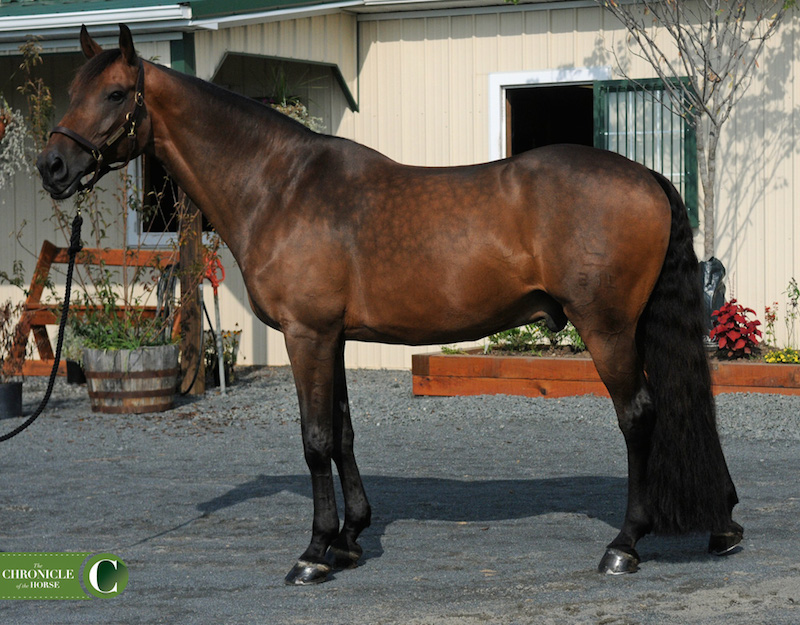
• LaGoy-Weltz said she was willing to take on a difficult project, and that’s exactly what she got. The first time she tried to ride him outside, Lono reared and left the arena.
“Any time there was kind of an open door in the arena, he would try to leave,” said LaGoy-Weltz. “He was just quite sensitive, and I think just needed some time. I remember in the beginning I couldn’t really do walk-halt or trot-halt [transitions] because if I got to halt then he’d just run backwards. He was a little bit insecure and had figured out how to use his size against you.
“He’s so sensitive that if he thought he was in trouble he would really panic, and then you’d have to be very tactful in how you corrected him and schooled him so that you didn’t make the problem worse,” LaGoy-Weltz continued. “It’s finding how to guide them out of the not-ideal behavior into a better pattern of behavior, and that just took a while.”

With Olivia LaGoy-Weltz.
• Because he was so sensitive, Lono was very reactive to the flags above the ring at the Adequan Global Dressage Festival (Fla.).
“We definitely went through a phase in the small tour where we had a few extended canter diagonals where we’d get halfway across, and he’d squeal and then launch himself in the air, and then go porpoising across,” said LaGoy-Weltz. “He used to be sound-sensitive. It’s funny to look back on now because now he deals pretty well with Rotterdam and Aachen. I think that just speaks of his own confidence now as a horse. He quite thinks he’s the bee’s knees.”
ADVERTISEMENT
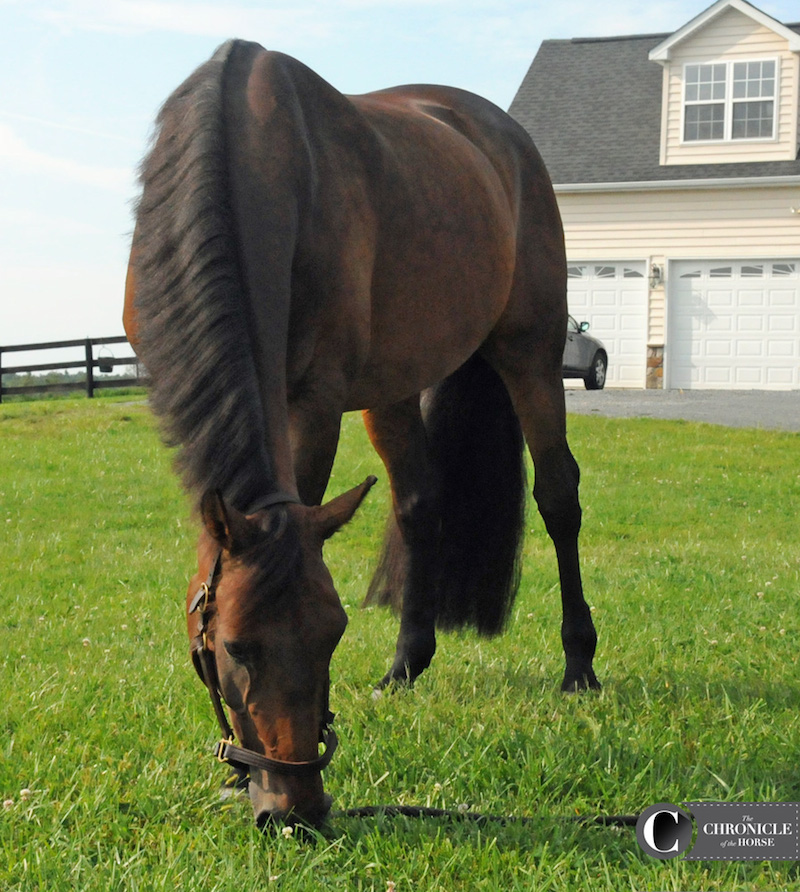
• Now that Lono has come out of his shell, he’s a bit of a pest around the people he knows.
“You walk by, and he instantly wants your attention, and I think that it’s a good quality,” said LaGoy-Weltz. “That’s a show horse quality. He used to be very shut down and very introverted. He’s still an introvert, but now he’s an introvert that has everyone around him trained, so he feels OK to be out of his shell. He trusts that everyone’s going to behave. He’s got the farrier trained and the vet trained and us trained.”

Getting some scratches from Olivia LaGoy-Weltz.
• Any treat is a good treat, but Otter Pops are his favorites.
• LaGoy-Weltz loves using the hill on the back part of her farm to train Lono.
“He’s so much more adventurous now, so I think getting to hack out is great for his brain and is great for his body,” she said.
• Grooming is one of Lono’s favorite times of day. “He’ll basically sit down on you when you curry him,” said LaGoy-Weltz.

• Lono isn’t attached to any specific horses, but he does like to chat with his traveling companions.
“He’s a caring horse I would say,” said LaGoy-Weltz. “He keeps tabs on and talks to the other horses, but he’s also great about going places by himself. He actually really likes it to be you and a groom and just him to be pampered.”
• “You can’t take advantage of this horse,” said LaGoy-Weltz. “He won’t let you. You don’t get anything with him by being tough. That doesn’t mean that you can’t correct him, but there’s no forcing him. He tries super hard, and I think that that’s almost part of the reason why he has such a clear defined, ‘I’m OK with this; I’m not OK with this.’ ”
